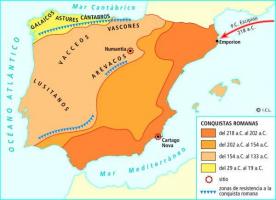The antecedents of the MEXICAN REVOLUTION

Image: Debate
We call revolution to a great social and economic change in a society that totally shakes a state, this being the consequence of a series of causes and antecedents of greater or lesser duration. To talk about the reasons for one of the most important American revolutions in this lesson from a PROFESSOR we are going to talk about the background of the Mexican Revolution.
Index
- Social antecedents of the Mexican Revolution
- Political background to the Mexican Revolution
- Economic background
- Cultural background
Social antecedents of the Mexican Revolution.
The situations prior to a great change can be of many kinds, since it is the great amount of antecedents which cause a great revolution, affecting elements as disparate as society, the economy or the politics. This is why it is important to discuss each of the background classes individually.
Mexican society prior to the revolution was extremely poor, basing the life of cthus 90% of the population in rural areas,
being the peasants who worked the land owned by the upper classes, who had achieved this situation by owning huge large estates.Along with the peasants, at the base of the population were the workers, who worked long 12-hour days and were also prohibited from carrying out a strike, since there were no laws to protect their interests.
The great inequality it was one of the causes of the revolution, since the peasants and workers wanted greater equality in front of politicians, clergy and businessmen, who in many cases were of American origin. Since the differences between nationals and foreigners was one of the major causes of the revolution, as we will see in other sections.

Image: Slideshare
Political background to the Mexican Revolution.
In all revolutions there is a series of political antecedents, since revolutions tend to be born as reactions to political corruption and how they affect a state.
The political system of Mexico before the revolution was that of a dictatorship led by Porfirio Díaz, who remained the sole leader of the Mexican state during more than 30 years. The advanced age of the Mexican leader led to a search for a replacement to command him, something that historically It has always been complicated in dictatorships, there are too many hidden interests that collide with the thinking of the town.
This situation caused some people to run for president but Díaz changed his mind and returned to offer himself as president, capturing one of his strongest rivals, Madero, so that he could not stand for election and winning because of it.
After getting out of jail, Madero went to the United States where he proclaimed the Plan of San Luis, which consisted of asking the Mexican people to rise up in arms and get the elections to be repeated to change the president. All of this sparked a series of uprisings that ended with Madero as the new president of Mexico, This being only the beginning of the revolution that the Mexican state was going to experience.

Image: Slideshare
Economic background.
Continuing with this lesson on the background of the Mexican Revolution, we will now talk about the economic situation. The economy has always been one of the axes of any historical society, so to talk about the antecedents of a revolution as important as the Mexican one, it is essential to talk about the economic causes that generated this reaction.
The Mexican political system caused several cases of corruption and unequal distribution of wealths, being common for entrepreneurs arriving from abroad to receive many more privileges than those of the interior, causing that the Mexican lower classes barely had to be able to eat. All this caused European and North American entrepreneurs to own lands and factories that were worked by peasants and workers of Mexican origin. The worst of all this is that many of the lands belonged to the Mexicans before the arrival of the foreigners, but it was the government itself who took them away from the nationals to give them to the big businessmen who came from outside.
The disengagement of businessmen from the land because they are far from it, a series of climatic changes that greatly affected the crops on which the majority depended. part of Mexican society and the crisis that began to appear both in the United States and in Europe caused the people to see increasingly worse the maintenance of Porfirio Díaz as President.

Image: Slideshare
Cultural background.
To conclude this lesson on the antecedents of the Mexican Revolution, we must talk about one of the most common, but also more forgotten, since they are not always talked about when we discuss the causes of a revolution.
The group led by Porfirio Díaz was called "the scientists", being people who belonged to the positivism group and who managed the country's politics. For years, this group and its ideas were welcomed by Mexicans, but all the antecedents that we have commented previously made the Mexican people begin to see it from another perspective will seek new political currents.
There were many new ideas that reached the Mexican people and that they faced the thought of the political leaders, arriving some of these due to the foundation of new universities in some of the largest cities of the Mexican state. One of the most important thoughts was the one that confronted the social Darwinism defended by the "scientists", proclaiming that mestizos could participate in political life just like any other Mexican, giving priority to those born in Mexico over foreigners.
If you want to read more articles similar to Background to the Mexican Revolution, we recommend that you enter our category of Story.



